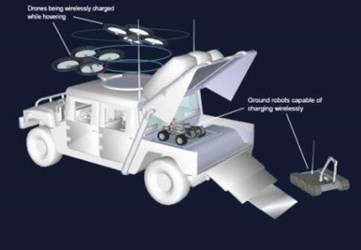Wireless Tech Charges Drones In Mid-Flight, Nearing Commercialization
By Jof Enriquez,
Follow me on Twitter @jofenriq

Using technology inspired by scientist and futurist Nikola Tesla, a team of researchers at Imperial College London has devised a method to wirelessly charge airborne drones. The new system of wireless power transfer could have many industrial, scientific, and healthcare applications when successfully commercialized.
As explained in a news release, "The technology uses inductive coupling, a concept initially demonstrated by inventor Nikola Tesla over 100 years ago. Two copper coils are tuned into one another, using electronics, which enables the wireless exchange of power at a certain frequency. Scientists have been experimenting with this technology for decades, but have not been able to wirelessly power flying technology."
Demonstrating that it can now be done successfully, the group of researchers at Imperial College London modified the electrical components of an off-the-shelf quadcopter drone and removed its battery. They attached and wrapped a copper foil ring that served as a receiving antenna encircling the drone's casing. On the ground, they built a transmitter device made out of a circuit board that is connected to electronics and a power source, producing a magnetic field whose frequency is tuned to the drone's electronics.
When the drone flew and hovered within ten centimeters of the magnetic field, an alternating current (AC) voltage was induced in the receiving antenna, and the drone’s electronics converted it efficiently into direct current (DC) voltage, powering the vehicle, according to the news release.
Wireless charging could significantly extend the utility of unmanned aerial vehicles (UAV). Drones that do not need to land to recharge could be deployed faster and continuously in combat areas or during rescue operations. They could be charged simply by hovering over a ground support vehicle, over power lines, and even near other drones flying in close proximity. A concept devised by the researchers involves drones transmitting power to sensors attached in hard-to-reach places of buildings and bridges to monitor structural integrity.
“Another application could include implantable miniature diagnostic medical devices, wirelessly powered from a source external to the body. This could enable new types of medical implants to be safely recharged, and reduce the battery size to make these implants less invasive," said Professor Paul Mitcheson, from the Department of Electrical and Electronic Engineering at Imperial College London.
Someday, the technology could be advanced enough for drones to charge science equipment on Mars, prolonging the life of expensive space missions there.
For now, the researchers are seeking partners to further develop their promising wireless power transmission, which they estimate to be one year from commercialization.
